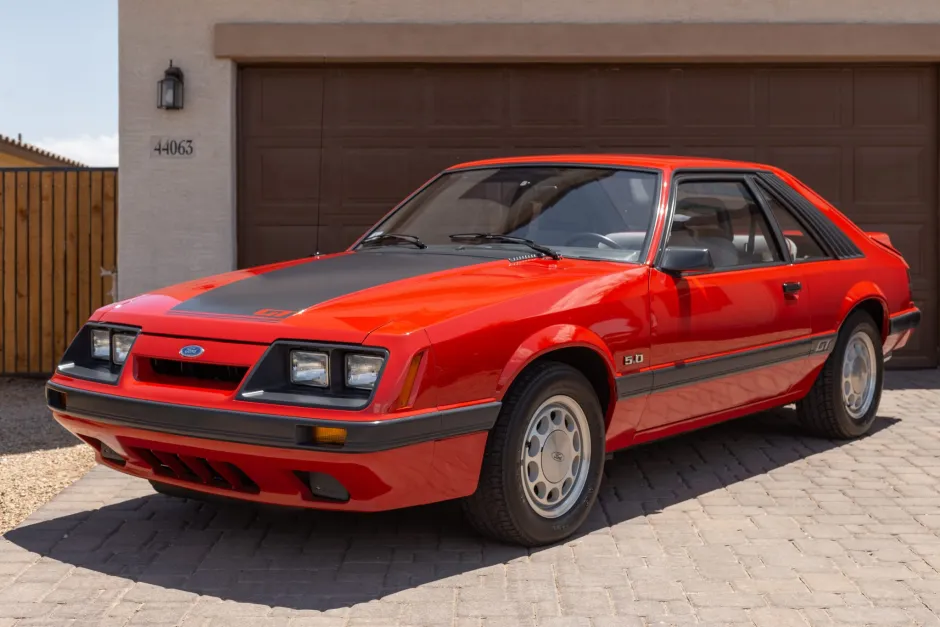When it comes to automotive legends, few pedigrees resonate as deeply as the Ford Mustang’s. Since its galloping debut in 1964, this iconic stallion has been the epitome of the American pony car and a stalwart symbol of freedom, power, and pursuit of the open road. Fast forward to 1986, the Mustang underwent some significant changes that reflected the next stage of its evolution. This deep-dive blog post is a must-read for Mustang enthusiasts, chronicling the highlights of the 1986 model, understanding how it sits within the Mustang’s famed lineage, and exploring what made this year special for automotive history aficionados.
The Context of ’86: Mustang Amidst Industry Dynamics
The 1986 Mustang emerged during an interesting time in the automotive industry. The late 70s and early 80s were a period of tumult, where energy crises and environmental concerns led to an evolution in consumer tastes, technology, and manufacturing regulations. These pressures profoundly influenced Ford’s approach to the pony car; the result was a Mustang that balanced performance with efficiency, without compromising its legacy.
Adapting to the Times: The 1986 Mustang Re-Engineered
Ford recognized the need to revitalize the Mustang, and the 1986 model was pivotal in executing this strategy. The Mustang’s powertrain was one of the first components to get a significant overhaul. This model year saw the introduction of the 5.0L V8 engine with fuel injection, marking a switch from carburetion that not only improved efficiency but also set the stage for modern induction systems.
The body styling also underwent changes, albeit more subtle. The angular lines and sleek contours of the exterior design, influenced by the aerodynamic considerations of the day, evolved the Mustang’s look while maintaining its unmistakable profile. Inside the vehicle, the driver-focused cockpit was in keeping with the Mustang’s spirit, blending comfort with the motoring’s raw joy.
Innovations That Galloped Ahead
Although the core essence of the Mustang remained unchanged—a potent blend of performance and affordability—the 1986 model introduced several innovations that set the stage for the modern iterations of the car. These included the adoption of a five-speed manual transmission as standard, enhancing the driving experience and control for enthusiasts.
The 1986 Mustang also marked the beginning of the Special Vehicle Operations (SVO) option, an indication of Ford’s commitment to performance in the face of rigorous emission standards and oil economy pressures. The SVO package included a turbocharged 2.3L four-cylinder engine with intercooling—a rarity at the time—and a host of other upgrades that turned the Mustang into a true athlete on the streets.
The Legacy of the 1986 Mustang
For many enthusiasts, the 1986 Mustang is a bridge between the classic muscle of earlier models and the modern refinement of later generations. It represented a crucial pivot point for Ford, demonstrating the brand’s adaptability and its dedication to keeping the Mustang relevant.
The year 1986 in the Mustang’s history might not be as headline-grabbing as some others, but it embodies the horse’s spirit; adaptable, enduring, and always moving forward. Today, the 1986 Mustang maintains a cult following, cherished for the unique charms it brought to the tarmac.
Restoring the ’86 Mustang
With the enduring appeal of the 1986 Mustang, many automotive hobbyists and professional restorers find joy in breathing new life into these classic rides. Restoring a ’86 Mustang presents a unique set of challenges and rewards. The availability of original parts and the know-how to maintain the classic character, while upgrading performance and safety features, make the restoration process engaging and personal.
The Future of the Past: The 1986 Mustang in Today’s Scene
The classic car scene is alive and well, and the 1986 Mustang is an integral part of it. Whether showcased at vintage car shows, car museums, or discreetly purring through the streets, the ’86 Mustang continues to turn heads and inspire conversations about automotive craftsmanship and the American driving culture.
Enthusiasts are not just preserving these historical rides but also modifying and driving them with a passion and appreciation that ensures the 1986 Mustang’s legacy burns bright. The aftermarket parts industry is seeing a resurgence of demand for ’86 Mustang components, catering to a growing community eager to maintain and enhance these treasures on wheels.
In Conclusion: The 1986 Mustang, A Story of Resilience and Adaptation
The 1986 Mustang stands as a testament to the ability of an iconic brand to adapt to changing times without losing its essence. It showcases the fusion of history, engineering, and design that transforms a mode of transportation into a cultural emblem. Enthusiasts, collectors, and automotive hobbyists will continue to cherish the ’86 Mustang as a living chronicle of bygone days and a pioneer of future automotive trends.
For those who have yet to experience the thrill of the 1986 Mustang, it remains a chapter in the ongoing saga of a car that has become so much more than a sum of performance metrics and engineering marvels—it’s an embodiment of the American spirit, etched in chrome, steel, and tire marks on asphalt.

